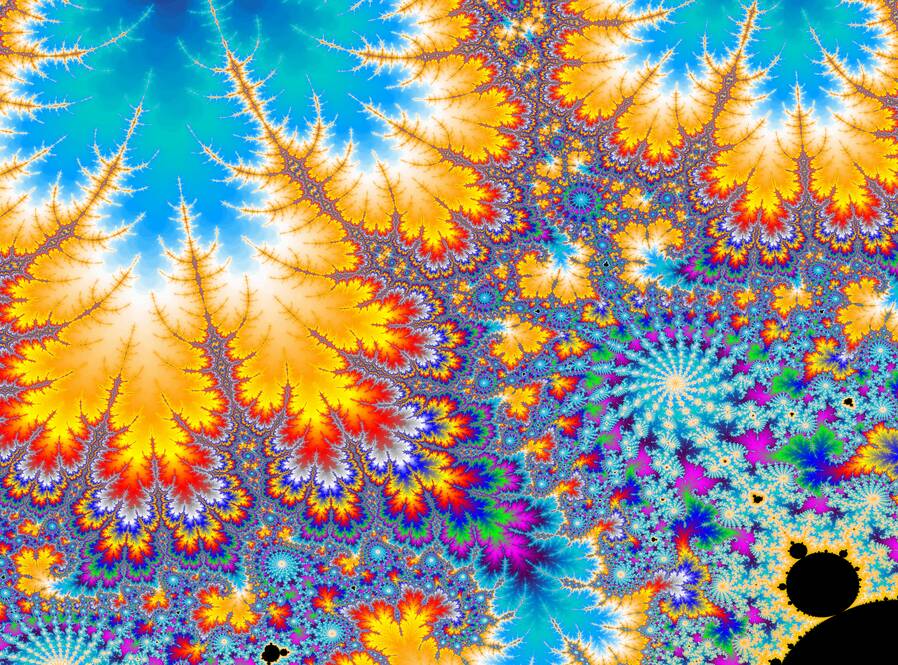In March 1980, Benoit Mandelbrot wrote a program on an IBM research computer to visualise a simple mathematical function.
The result was startling - it looked like a drop of ink on blotting paper, with colours bleeding off the edge.
But it also had a remarkable feature. No matter how far in or far out he zoomed, the pattern was repeated.
It was like an infinitely recursive array of Russian dolls, only more interesting as the details subtly vary with each layer.
Animations of what became known as the Mandelbrot set (originally described by Robert Brooks and Peter Matelski) is like a window into the fabric of the universe itself.

The endless ink blot repetition feels like the edge of insanity as you fall into eternity.
Mandelbrot called these "fractals", from the Latin word meaning shattered glass.
It turns out that the simple set of rules like this help describe the vast richness of nature.
If you look closely at broccoli, lungs and coastlines, there are branches within branches, shapes within shapes, and so on.
A small fragment of coastline looks somewhat similar at every scale.
It's a curious feature of this field of mathematics that it reveals how order can emerge from chaos.
While you might expect that chaotic to be random, we know now that they produce a surprising degree of order and even beauty.
The Mandelbrot set contains features named the Seahorse, the Satellite and the Antenna.
Fractals are also found in human creations such as music, painting, architecture and stock market prices.
These suggest that the principles of chaos are fundamental to nature.
It's even shown potential in medicine, such as in a 2015 study of lung cancer. They found that subtle changes in fractal dimensions might be clinically useful for detecting tumour type and response to therapy.
Chaos theory had an earlier start with in Edward Lorenz, who had also been programming a computer.
At his office at MIT in 1961, he was trying to simulate weather patterns.
He entered the number .506127 into one of the variables in his model and now he wanted to run it again, this time by entering .506.
Back then computers were very slow, so he wandered off for a cup of coffee while the machine did its thing.
When he came back, he was amazed to discover that a tiny change generated a hugely different result.
And, in a nice parallel with Mandelbrot's later work, he also produced beautiful, organic images.
The Fuzzy Logic Science Show is on 11am Sundays on 2xx 98.3FM. Send your questions to AskFuzzy@Zoho.com; Podcast: FuzzyLogicOn2xx.Podbean.com







